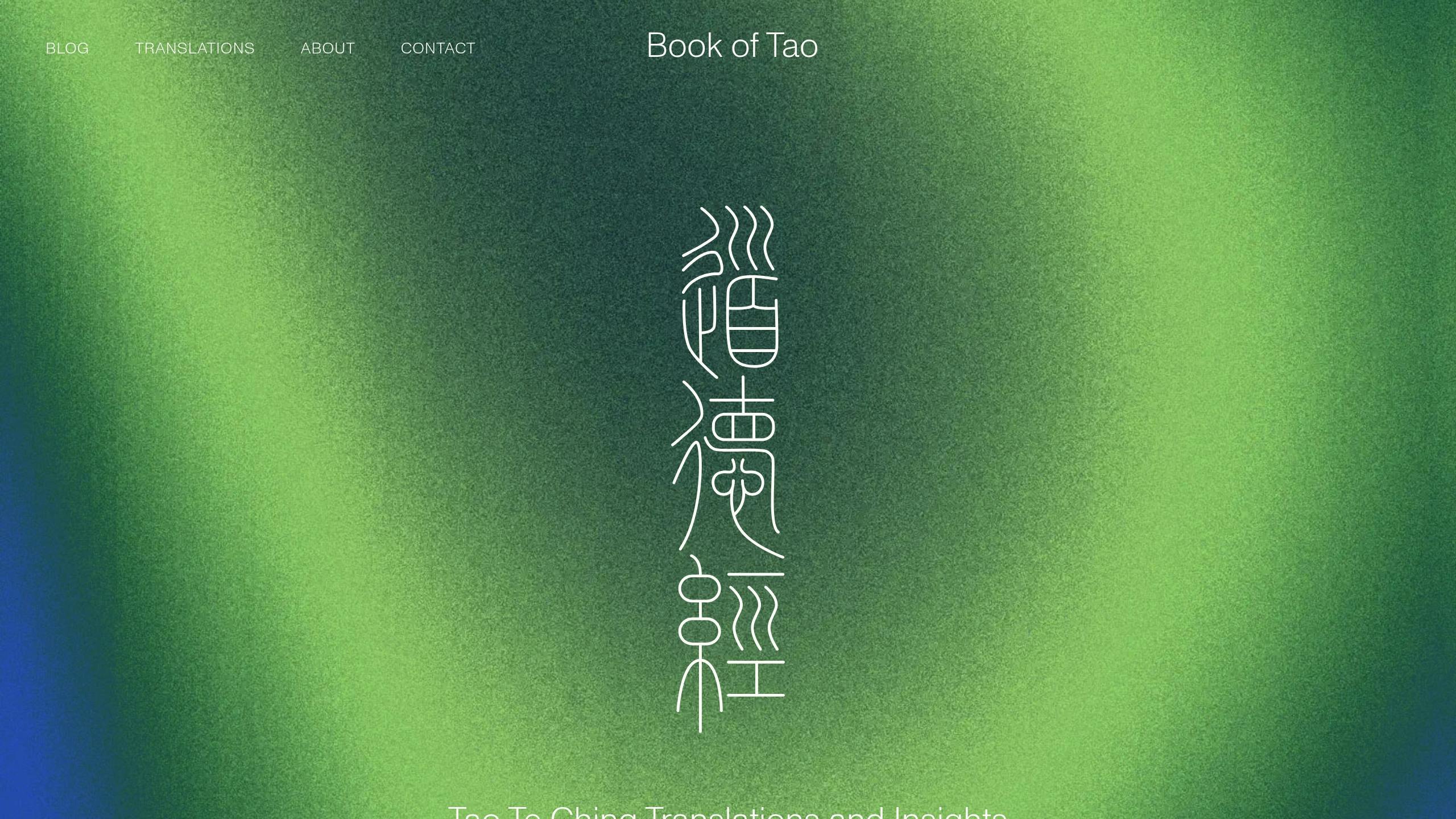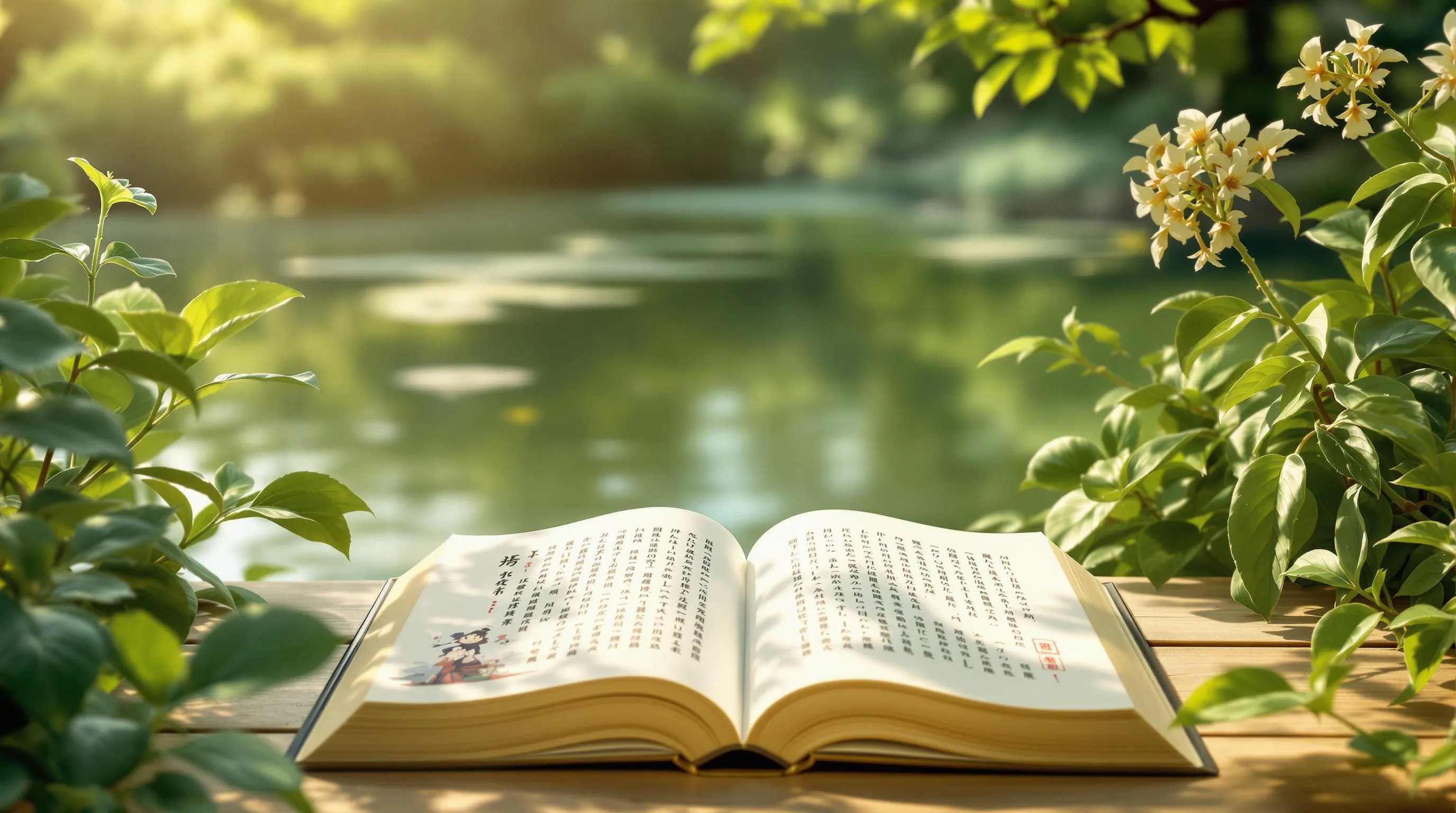The Tao Te Ching, written by Lao Tzu, is a classic text with 81 chapters exploring themes like existence, leadership, and self-cultivation. Its translations fall into two main categories:
- Literal Translations: Focus on word-for-word accuracy, preserving the original structure and meaning of Classical Chinese. These are ideal for academic study but can feel dense and less fluid.
- Poetic Translations: Prioritize emotional depth and readability, using modern language and artistic elements to make the text relatable. These are great for personal growth and literary appreciation.
Key Differences at a Glance
| Feature | Literal Translation | Poetic Translation |
|---|---|---|
| Focus | Accuracy to original text | Emotional and philosophical resonance |
| Language | Precise, scholarly | Flowing, modern, and artistic |
| Best For | Scholars, researchers | Spiritual seekers, writers, general readers |
| Example | D.C. Lau's scholarly work | Ursula K. Le Guin’s modern rendition |
Quick Takeaway
If you want to study the text deeply, go with a literal version. For a more personal or artistic experience, try a poetic one. Exploring multiple translations can offer a richer understanding of the Tao Te Ching's layered meanings.
Daodejing: Which Version Should You Get?
Literal Translation Features
Literal translations aim to retain the structure and meaning of the original Chinese text, even when dealing with the complexities of Classical Chinese.
Word-for-Word Translation Goals
These translations focus on accurately conveying the original meaning. However, Classical Chinese poses unique structural challenges, as illustrated in the table below:
| Feature | Classical Chinese | Translation Challenge |
|---|---|---|
| Grammar | No tense markers | Unclear tense |
| Number | No plural indicators | Unclear singular/plural usage |
| Voice | No active/passive forms | Unclear voice |
| Punctuation | Minimal or absent | Hard to identify sentence ends |
These hurdles significantly influence the methods used by literal translators.
Major Literal Translations
To address these challenges, translators often include alternative interpretations and adjust sentence structures to clarify meaning while staying true to the original text.
The complexity of literal translation is especially apparent in its 81 chapters, which contain around 5,162–5,450 Chinese characters. As Kirby Record explains:
"The problem of intentional ambiguities in the original work lies at the heart of all poetry translations but is particularly challenging in the case of ideographic texts of antiquity..."
Among notable efforts, D.C. Lau's translation is recognized for its academic rigor. His work offers a more neutral perspective on the text, showcasing how literal translations can shed light on the source material while respecting its inherent ambiguities.
For those interested in exploring the original text in detail, resources like Wengu and Zhongwen provide tools to analyze it character by character.
Poetic Translation Features
Poetic translations of the Tao Te Ching focus on making the text approachable while evoking emotional depth, connecting ancient insights with contemporary perspectives.
Literary Elements in Translation
These translations skillfully blend musicality and meaning through various literary techniques:
| Literary Element | Purpose | Impact on Understanding |
|---|---|---|
| Rhythm | Creates two-beat iambic patterns | Improves flow and memorability |
| Contemporary Language | Replaces outdated terms | Makes the text easier to follow |
| Cultural Adaptation | Generalizes ancient Chinese references | Helps readers relate to the ideas |
| Economy of Words | Keeps expressions concise | Preserves the text's clarity |
This approach allows poetic translations to express deep ideas while maintaining their artistic essence. Douglas Allchin captures this balance, saying:
"I have sought to balance music and meaning. I invite the reader to immerse himself or herself in the sound and the images - and in meditative reflection."
These techniques create a foundation for understanding key poetic translations.
Major Poetic Translations
Using these strategies, certain translations have shaped how the Tao Te Ching is understood in the West. Ursula K. Le Guin’s version is particularly well-regarded for its artistic flair and modern readability. Though she didn’t know Chinese, she called her work a “rendition, not a translation,” aiming to connect with today’s readers. Le Guin described the text as:
"It is the most lovable of all the great religious texts, funny, keen, kind, modest, indestructibly outrageous, and inexhaustibly refreshing. Of all the deep springs, this is the purest water. To me, it is also the deepest spring."
John Minford highlights the challenge of capturing Taoist ideas in poetic form:
"The Tao needs to be experienced, not talked about. This Classic and its countless Commentaries do talk, they propose all manner of Images... But these are merely pointers towards the Tao, toward the gnosis of Taoist experience, parts of a hermetic vocabulary for initiates. In that sense these Names are No-Names."
With over 250 translations available, poetic versions continue to reinterpret this timeless text, offering fresh perspectives while keeping its wisdom relevant for modern readers.
sbb-itb-4c1eb9b
Translation Style Comparison
Key Concept Translation Differences
Translating the Tao Te Ching involves bridging complex ideas across languages and cultures. Different styles approach key Taoist terms in distinct ways:
| Concept | Literal Translation Approach | Poetic Translation Approach | Impact on Understanding |
|---|---|---|---|
| Tao/Dào | Often rendered as "way" or "path" | Interpreted as "the Way", "natural flow", or "the essential process" | Shapes how universally the idea is understood |
| Te/Dé | Typically translated as "virtue" | Broadened to include "inner strength", "character", or "personal integrity" | Shifts the focus on personal growth |
| Wu wei | Translated as "not doing" or "non-action" | Reimagined as "effortless action" or "going with the flow" | Changes how the concept is applied in daily life |
The choice of translation style can deeply influence how readers connect with and interpret Taoist principles.
Text Accessibility
Different approaches to Chapter 3 provide varied reading experiences:
"By not elevating the worthy, you bring it about that people will not compete. By not valuing goods that are hard to obtain, you bring it about that people will not act like thieves. By not displaying the desirable you bring it about that people's hearts remain undisturbed."
– Robert Henricks
Henricks' literal translation stays true to the original but may feel dense to modern readers. In contrast, Stephen Mitchell's version simplifies and modernizes the text, making it easier to grasp.
Philosophy Understanding
Translation style doesn't just affect readability - it also shapes how the philosophy is understood. Literal translations often preserve the text's precision but can obscure its deeper meaning. Poetic translations, on the other hand, highlight the philosophical nuances yet sometimes oversimplify the ideas. The opening line, "The Tao that can be told is not the eternal Tao", exemplifies the text's intentional ambiguity. Choosing a translation style that aligns with your goals is essential for engaging with the text's philosophical layers.
Selecting a Translation
Reader Needs Assessment
When choosing a translation, think about your purpose. Are you looking for accuracy, emotional depth, or a mix of both? Here's a quick breakdown to help guide your decision:
| Reading Purpose | Style | Best For |
|---|---|---|
| Academic Study | Literal | Scholars, researchers, language students |
| Personal Growth | Poetic | Spiritual seekers, meditation practitioners |
| Cultural Understanding | Both | History enthusiasts, philosophy students |
| Literary Appreciation | Poetic | Writers, artists, poetry lovers |
Your personal perspective plays a big role in what resonates with you. As translation scholars note, "Understandably, the translation that feels best to us is the one that matches our own personal world view". This makes exploring multiple translations a valuable practice.
Benefits of Multiple Translations
Looking at different translations can uncover subtle meanings and provide a richer understanding. It’s especially useful for navigating cultural and linguistic differences. As Stefan Senudd explains, "The text is far too vague and unclear to be trusted to just one translation. There must be several perspectives in which to see it and several shapes in which to form its wordings in English and other languages".
Book of Tao: Translation Resources

For those diving into the Tao Te Ching, Book of Tao (https://bookoftao.com) is a great resource. The site offers a wide range of literal and poetic translations, making it easier to explore different interpretations. It also includes articles on Taoist philosophy and mindfulness, helping readers unpack the text's often cryptic style and build a solid foundation for deeper study.
Conclusion
Main Points Review
Examining both literal and poetic translations of the Tao Te Ching reveals two distinct ways of engaging with this ancient text. Literal translations stick closely to the structure of Classical Chinese, giving scholars a direct view of the text's complexity. On the other hand, poetic translations make its deep insights more accessible to modern readers. The original work consists of about 5,000 Chinese characters. This comparison shows how each translation style fulfills different interpretative purposes, paving the way for further study.
Next Steps in Study
To dive deeper into the Tao Te Ching, consider these study methods based on the differences in translation styles:
| Study Method | Purpose |
|---|---|
| Side-by-side Reading | Compare how different translations interpret the text |
| Character Analysis | Explore the meanings of individual characters through commentary |
| Meditative Reading | Reflect personally and develop your own understanding |
The text’s intentional ambiguity encourages readers to uncover deeper meanings and embrace simplicity. Holmes Welch aptly described it as:
"A famous puzzle which everyone would like to feel he had solved".
Engaging with both literal and poetic styles can enrich your grasp of Taoist philosophy.






.webp)